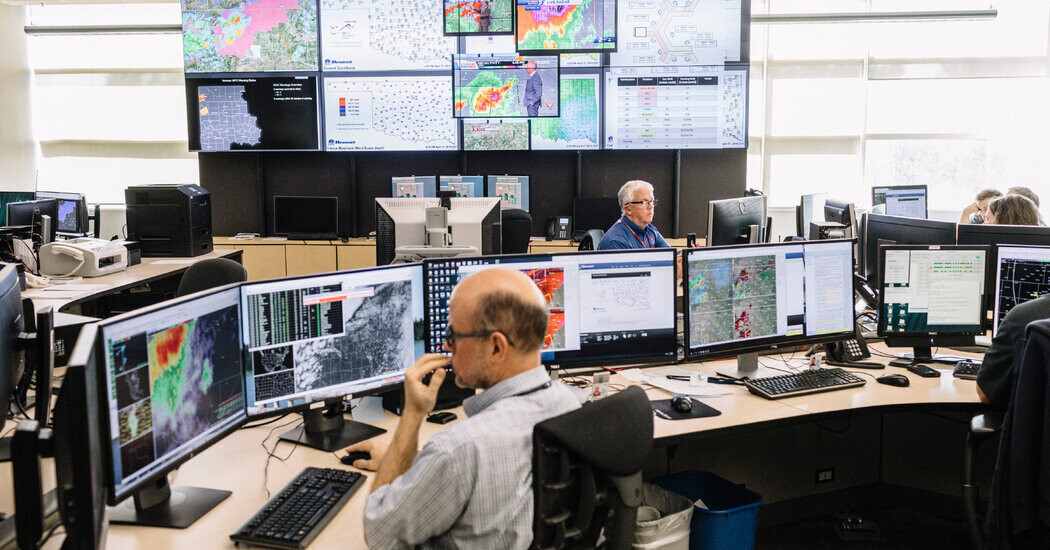

A bill introduced Friday would classify forecasters and other staff as critical public safety roles. It comes after the Weather Service lost nearly 600 people to DOGE cuts.
A bill introduced in the House of Representatives on Friday would make it harder to fire most employees of the National Weather Service and give the agency’s director the authority to hire new staff directly, months after it lost nearly 600 employees to layoffs and retirements as part of the Trump administration’s sweeping cuts to the federal work force.
The Weather Workforce Improvement Act would designate certain positions within the agency as critical to public safety. The bill’s sponsors say it would have protected meteorologists, as well as other roles within the agency, from the cuts this year.
Those jobs include the people who specialize in hurricane forecasts and issue warnings about tornadoes and flash floods, as well as the employees who physically maintain things like weather models or launch weather balloons.
“Weather forecasting is not partisan,” said Representative Mike Flood of Nebraska, one of the bill’s sponsors. “Everyone supports the National Weather Service. Everyone relies on them, whether they realize it or not.”
The Weather Service has suffered from short staffing for years, long before the Trump administration’s cuts, but that became more severe this spring, as hundreds more employees began retiring or were forced out.
At the same time, the country has faced a nonstop pace of deadly and expensive weather disasters, including the California wildfires, several tornado outbreaks and severe hailstorms. For the first time in the agency’s history, some forecasting offices no longer had enough staff members to operate overnight, and others had to curtail the twice-daily launches of weather balloons, which collect data on atmospheric conditions that feed into forecast models.